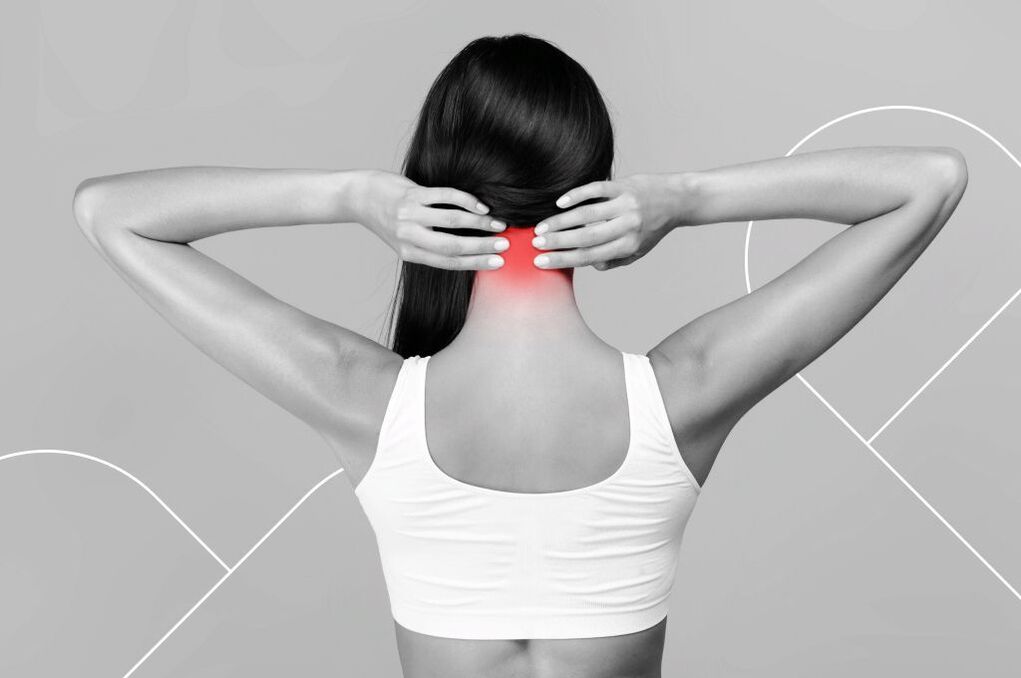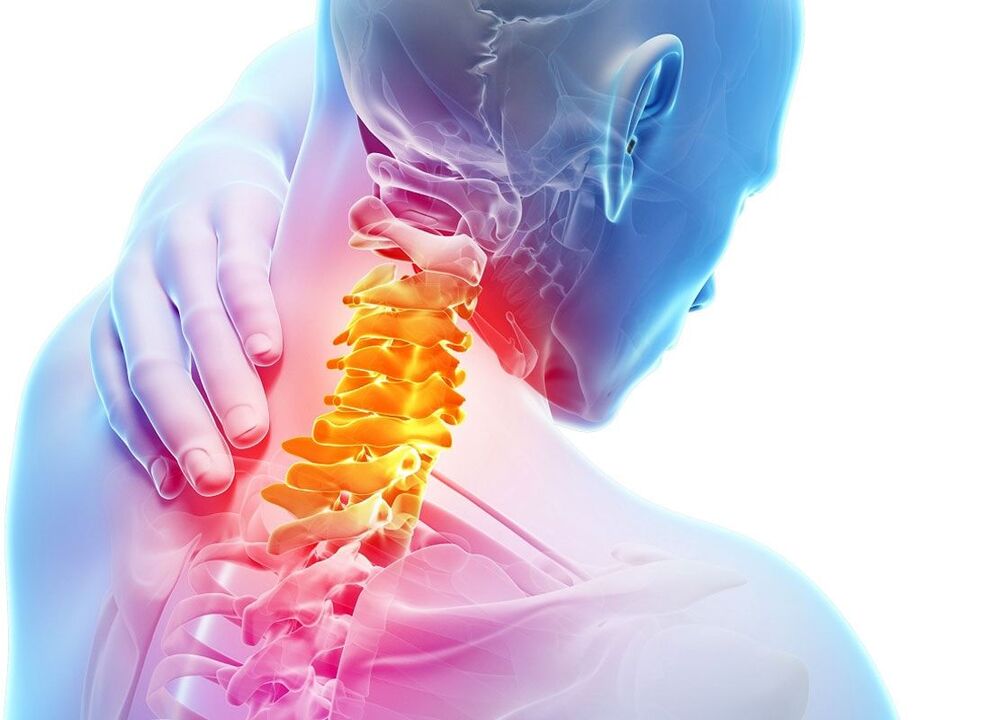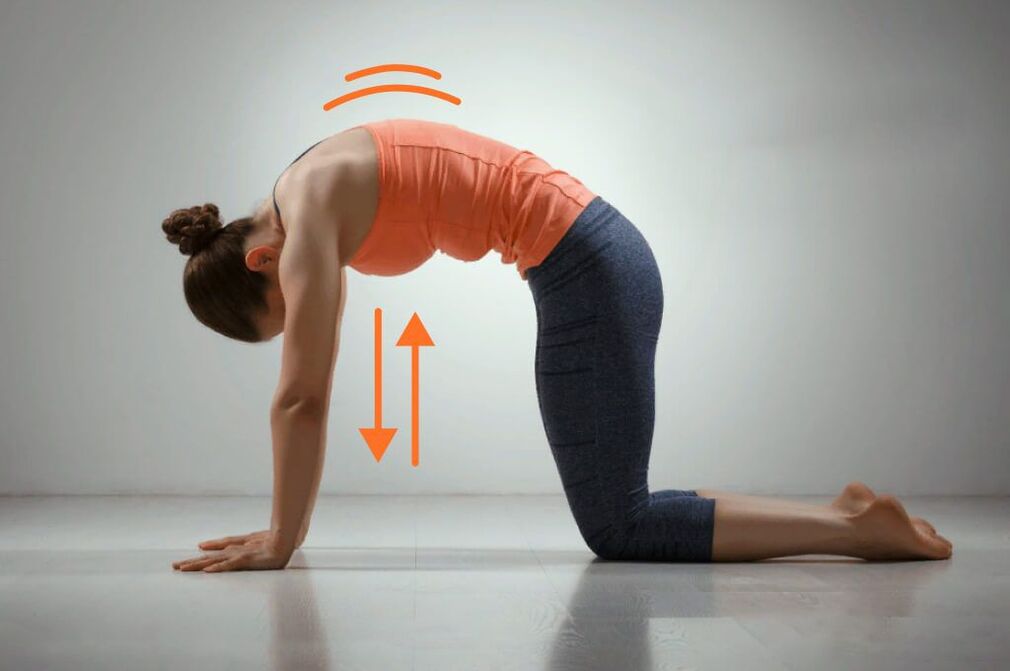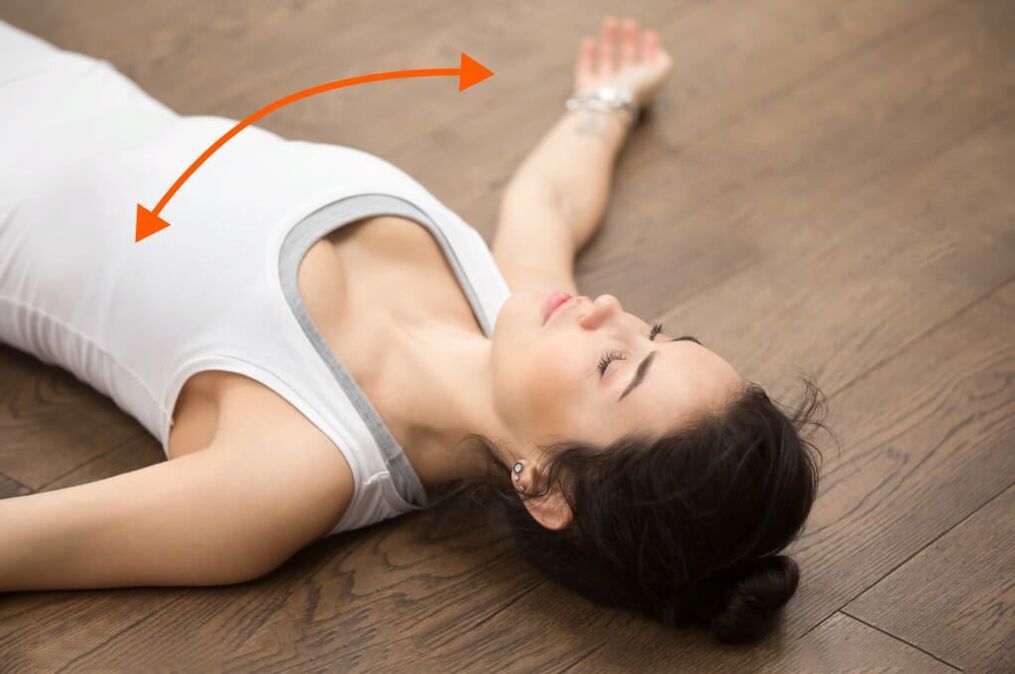
Osteochondrosis is a degenerative-dystrophic change in the complex of vertebrae, intervertebral discs and joints. It develops as a result of metabolic disorders in the cartilaginous and bone tissues of the vertebrae and discs. In simple words, in chondrosis and osteochondrosis, the discs and adjacent bone structures wear out over time, compensating for the changes through marginal tissue growth and compaction. In chondrosis - only the disc cartilage itself, and in osteochondrosis - the vertebral bodies adjacent to it. This is a very common disease. According to WHO statistics, up to 80% of the world's inhabitants suffer from it. Doctors note that most often this occurs due to increased stress on the spine - excess weight and a sedentary lifestyle.
What to do with osteochondrosis and where to go if you suspect the disease, say neurologist Igor Matsokin and physiotherapy specialist Oksana Ivanova.
Classification
According to the ICD-10 classification, spinal osteochondrosis has the code M42. Includes:
- M42. 0 Juvenile osteochondrosis of the spine Calve's disease, Scheuermann's disease
Excludes: positional kyphosis (M40. 0)
- M42. 1 Osteochondrosis of the spine in adults
- M42. 9 Spinal osteochondrosis, unspecified
Species
Depending on the location, there are several types:
Cervical
The cervical spine undergoes a high load and a very complex range of movement.
Symptoms:
Snapping and clicking sensation in the neck when turning the head from side to side, stiffness when moving. You may experience a headache (tension headache), a feeling of pain in the muscles of the shoulder girdle.
Constantly tense muscles can cause numbness and tingling in the hands.
The main focus of treatment is restoration, relieving spasms and inflammation, and restoring range of motion.
Chest
The thoracic region is less mobile than the rest of the body where osteochondrosis occurs. Therefore, it rarely appears.
Symptoms: pain in the chest muscles, often worsening with static load.
Brachialis
Osteochondrosis of the shoulder joint occurs due to injuries, stretching of tendons and muscles. Most often it occurs when there is excessive load on the shoulders of athletes and loaders. But it can also develop in the complex of cervical osteochondrosis.
There is pain and restrictions when moving the joints.
Vertebrate
With osteochondrosis of the spine, the intervertebral discs are destroyed. It turns out that not one part of the spine is affected, but two or more. For example, in the lumbar and cervical regions. This is called polysegmental or generalized osteochondrosis of the spine.
Lumbar
Osteochondrosis of the lower back is common. The spine in the lumbosacral region experiences greater stress.
Symptoms:
- pain in the lower back, legs
- pain when bending, turning - stiffness in back movements
Hip
With osteochondrosis of the hip joint, the pain is not severe, but it is important to immediately consult a doctor so that surgical intervention is not required.
Knee
Knee joint disease. The cartilage that ensures unhindered sliding and movement of the joint is destroyed and cannot be restored. Fibrous cartilage forms, causing pain and stiffness in the leg. Pain and limited knee movement are the main reasons to consult a doctor and make a diagnosis.
Young
The disease manifests itself in children, most often between 10 and 18 years old. Degenerative changes occur in the spine, affecting ligaments, joints, intervertebral discs and bones. Juvenile osteochondrosis progresses quickly, but in the early stages it is difficult to detect because there is no mobility limitation. It is only in the morning that you feel any discomfort after sleeping.

Causes
The disease occurs when there is a metabolic disorder. As we age, our cartilage tissue wears down. Lack of water, microelements and amino acids reduces the elasticity of intervertebral discs. Salt deposits are a consequence of osteochondrosis. The cause of pain is usually irritation (or irritation) of the nerve roots.
The disease affects athletes who place great stress on their backs, such as weightlifters. The risk increases after spinal injuries. Osteochondrosis often occurs in school-age children who sit for a long time, hunched over desks, and in drivers. Which factor will cause the disease depends on the lifestyle.
Degrees
For osteochondrosis, there are 4 degrees (stages):
- 1st degree - chondrosis. There is already pain
- 2nd degree – instability. The affected vertebral disc becomes displaced in relation to the lower one, which causes sharp pain.
- 3rd degree – formation of intervertebral hernias. They compress nerve fibers and blood vessels.
- Grade 4 – fibrosis of the intervertebral disc. Osteophytes may appear. These are bone growths with which the body tries to restore the supporting function.
When to do prevention
Better late than never. If you are overweight and have a sedentary lifestyle, the sooner you start making changes, the more you will invest in your health.
Symptoms
How the disease can manifest itself in different departments:
- back hurts
- coldness and numbness of hands and feet
- headaches
- restriction of movement
It is important not to confuse these signs with other diseases. Symptoms can be similar, for example, to osteochondrosis of the chest and diseases of the cardiovascular system. For an accurate diagnosis and prompt treatment, you need to consult a neurologist or therapist to receive a referral to a specialist.
Pain
Pain is the main problem with osteochondrosis, which is difficult to get rid of. Furthermore, not only the spinal disc or joint hurts - the pain radiates further throughout the body. And it happens that the pain from thoracic osteochondrosis radiates to the heart, which is why the sensations are easily confused with heart disease.
How to distinguish heart pain from osteochondrosis:
- In heart problems, there is a burning sensation in the chest, which can radiate to the arm or neck. Painful sensations appear suddenly and last no more than 30 minutes. The temperature rises, dizziness and chills appear. Accompanied by a feeling of shortness of breath, shortness of breath.
- Pain in osteochondrosis can be different: pressing, shooting. As a rule, it is of a moderate nature. Not accompanied by shortness of breath and changes in blood pressure and pulse. It is herpes zoster in nature and can last for several days or disappear instantly.
Headache
The occurrence of a headache depends on the origin of the disease. Headache occurs as a consequence of excessive tension in the musculo-ligamentous apparatus of the neck, the impact of muscles on the passage channels of the painful cutaneous branches of the trigeminal nerve and the impact on the trunks of autonomic regulation of vascular tone.
Dizziness and noise in the head
Feelings of dizziness and noise in the head with osteochondrosis occur for the same reason as headaches: due to muscle tension and irritation of certain areas of the autonomic nervous system with a subsequent vascular reaction. It is important to remember that similar sensations in the ears can be signs of other diseases.
Lump in the throat
A lump in the throat with osteochondrosis of the cervical spine is a common symptom. This is due to the fact that the inflamed tissue increases in volume. A person may feel a tickling, throbbing sensation in the neck and even suffocation. It feels like something is stuck in your throat, especially when swallowing. This discomfort often forces you to see a doctor. But this is not always osteochondrosis; it is important to exclude other pathologies, for example, enlarged thyroid gland, chronic pharyngitis. If you feel something similar, it's best to start with an otolaryngologist. He will determine the cause and refer you to another specialist.
Dyspnea
Shortness of breath occurs due to compressed vascular bundles. Appears with osteochondrosis of the cervical or thoracic regions. Due to the pain, it is not possible to take a deep breath; you need to breathe frequently and shallowly. As a result, respiratory functions are impaired, headaches and dizziness occur due to a lack of oxygen to the brain. This can lead to serious consequences. If you notice this symptom, see your doctor.
Panic attacks
A neurosurgeon at a regional hospital claims that there is a direct connection between panic attacks and osteochondrosis. One of the causes of panic attacks is a sign of impaired blood circulation in the brain. And this often happens precisely with osteochondrosis of the cervical spine due to compression of the blood vessels and the vertebral artery. Chest pain and shallow breathing can also cause panic due to this condition.
Temperature
Whether there can be a temperature with osteochondrosis depends on many reasons. It is important to exclude other factors, such as acute respiratory infections.
Pressure
The disease can affect blood pressure; It is important to avoid these pressure spikes.
Clinical guidelines
At diagnosis, conservative therapy followed by surgery is recommended to eliminate the cause of pain. The following medications are prescribed in clinical guidelines:
- Nonsteroidal anti-inflammatory drugs in the form of suppositories, injections, ointments, gels.
- For acute, high-intensity pain, therapeutic blocks are indicated, the main medications of which are local anesthetics and glucocorticoids.
- Manual therapy, osteopathy, massage.
Exacerbation
The sooner treatment is started, the easier it will be to avoid exacerbations in the future. A common cause is lifting heavy objects, especially with one hand. It is important to distribute the weight evenly and not lift it suddenly. It is advisable not to lift heavy things. If exacerbations occur, medications will come to the rescue.
Treatment
The treatment is complex, using several methods at the same time. The main objective is to relieve pain and prevent further degradation of the vertebrae and cartilage.
Therapeutic exercise (physiotherapy)
It is the main method of conservative treatment of diseases of the musculoskeletal system. Dosed loads for
- nerve root decompression
- correction and strengthening of the muscular corset
- maintain correct posture and give the ligamentous-muscular system the necessary flexibility
- prevention of complications
To achieve their goals, it is recommended that patients exercise regularly with rehabilitation equipment and perform joint exercises. These exercises improve blood circulation, normalize metabolism and nutrition of intervertebral discs, help increase intervertebral space, form a muscular corset and reduce the load on the spine.
However, the treatment of diseases of the musculoskeletal system is not limited to exercise therapy. Physiotherapy based on the use of physical factors:
- low frequency currents
- magnetic fields
- ultrasound and laser
Physiotherapy application
It allows you to speed up the treatment of many diseases, increase the effectiveness of drug therapy and reduce its dosage, as well as avoid side effects typical of medications.
Massage
Effectively relieves muscle tension and pain, improves blood circulation and has a general strengthening effect.
Manual therapy
The doctor's individual impact on the musculoskeletal system to relieve acute and chronic pain in the spine and joints, as well as to increase range of motion and correct posture.
Reflexology
Various therapeutic techniques and methods of influencing the reflexogenic zones of the body and acupuncture points. Using reflexology in combination with other treatment methods significantly increases its effectiveness.
Drug therapy
Indicated during the period of worsening of the disease and aims to alleviate pain, eliminate the inflammatory process and enhance metabolic processes. Medications can be taken intramuscularly or intravenously.
It is important to note that although each of the listed methods is highly effective, the greatest therapeutic effect can only be achieved when combined with exercises using rehabilitation equipment. This allows you to create a complete muscular corset and guarantee long-lasting treatment results. The treatment of each type of osteochondrosis depends on its location and the causes of its appearance.
Home treatment
At home, you can and should continue treatment, according to your doctor's recommendations. First of all, pay attention to your diet and exercise at home. If you want to add folk remedies or decoctions to your treatment, consult your doctor to see if combining with medications is safe.
Drugs
Most osteochondrosis medications are aimed at relieving pain:
- nonsteroidal anti-inflammatory drugs (NSAIDs) with diclofenac, ibuprofen, ketoprofen and nimesulide. And not only in the form of tablets, but also ointments and gels. It is important to take the tablets in courses and not systematically due to their effect on the gastrointestinal tract.
- Opioid analgesics (glucocorticoids) are prescribed by a doctor for severe pain if NSAIDs do not help relieve the pain.
- Anticonvulsants or antidepressants are necessary for neuropathic pain.
- vasodilators to avoid lack of oxygen.
- chondroprotectors for osteochondrosis - medicines to improve the functions of cartilage and joints.
- Muscle relaxants help relieve pain caused by excessive muscle tension.
Applicators
Applicators for osteochondrosis are a popular addition to treatment. It affects nerve impulses and improves blood flow, helping to relieve swelling. I mainly use two types of applicators:
- Kuznetsov applicator - mat with plastic spikes
- Lyapko applicator - covered with needles and alloys of various metals.
They can only be used after authorization from the attending physician.
Collar
A cervical collar (or bandage) helps with cervical osteochondrosis to relax the neck muscles and reduce the load on it. As a result, the pain disappears and blood flow to the brain improves. Bandages come in different sizes and stiffness, so if you have neck pain, be sure to consult a doctor and find out the cause. If it is osteochondrosis and you have no contraindications, your doctor will tell you which product is best suited for you.
Darsonval
Darsonval is a medical device that produces current in the form of a pulsed damped discharge. It has a very broad spectrum of action, from dermatological problems to gastrointestinal disorders. Darsonval improves tissue permeability and improves local blood circulation. Due to this, the medicine penetrates faster and deeper, the muscles relax and spasms disappear.
Dropper
Droppers for osteochondrosis help quickly relieve pain. They are prescribed in cases where other medications are contraindicated. This happens, for example, in people with intolerance to the components of NSAID tablets.
Corset
The corset is used for osteochondrosis to fix the spine. This helps relieve tension and prevent the vertebrae from shifting. You can use it after consulting a doctor.
Plasters
Spine and joint pain can be relieved with analgesic patches. They are convenient to use when it is not possible to apply ointment or cream, as they stain clothes.
Injections
Injections help quickly relieve pain during an exacerbation. It is effective and fast-acting. It is important to continue taking care of your body and, even if it improves, follow your doctor's recommendations and exercise. Injections are also a quick and effective way to deliver nutrients to the intervertebral discs.
What to inject for osteochondrosis:
- chondroprotectors
- NSAIDs
- antispasmodics
- vitamins
The choice depends on the evolution of the disease, the presence of pain and the recommendations of the attending physician.
Vitamins
- Vitamin D helps in the absorption of calcium, necessary for the restoration of the bone structures of the spine.
- Vitamins A, E, C contribute to the production of collagen and other tissues necessary for joints.
- The medical journal talks about B vitamins (thiamine, pyridoxine and cyanocobalamin), which have an analgesic effect in cervical osteochondrosis. Thanks to this, you can reduce your intake of painkillers.
Orthopedic pillows
Orthopedic pillows do not replace treatment, but sleeping with them will be much more comfortable. Cushions come in different shapes and materials. For example:
- a rectangular or cushion pillow is suitable for people with any type of osteochondrosis
- crescent shape for neck and shoulder pain
- a pillow with a middle indentation or shoulder indentation will help people with cervical osteochondrosis maintain adequate blood circulation in any position during sleep. Ideal for the neck and its natural position.
It is also important to take into account not only the form of osteochondrosis, but also the position in which the person prefers to sleep. A neurologist will tell you which pillow to choose correctly, after analyzing your sleep preferences and the characteristics of the course of the disease.
Massage
Therapeutic massage can only be done for osteochondrosis in a state of remission. It will help improve blood circulation, metabolic processes, flexibility of the spine and muscles. Proper massage slows or even prevents the spread of the disease. But it is not always possible to visit a masseur. Special devices will come to the rescue, such as electric back and neck massagers. They are especially effective in the early stages of cervical osteochondrosis. The main thing is to use it correctly and consult a doctor.
Diet
There is no special diet for osteochondrosis. The most important thing is to maintain a healthy weight. If you have extra pounds, you should discuss weight loss methods with your doctor and understand the reasons for your high weight.
What does a balanced diet mean:
- protein
- healthy saturated fats
- complex carbohydrates
- fruits and vegetables
It's also important to monitor the amount of salt you consume. Promotes fluid retention in the body.
Exercises
Special ones with a therapeutic effect stand out, for example, after surgery to remove a spinal hernia.
Furthermore, they are quite simple exercises, even for an unprepared person. For example, "first aid" for relieving neck tension:
Take the correct elbow position (without bending your lower back). Slowly push the floor away from you with your hands, then "fall" with your back between your shoulder blades. No need to do push-ups. Hands remain in one position. It is the thoracic region that works up and down.

Gymnastics to improve thoracic mobility:
Lying on your back, bend your knees, arms to the sides, just below your shoulders. Touch the hand of one hand to the hand of the other. At a glance, "following" the hand. The shoulder can lift off the floor. Run slowly for a minute.

You can alleviate discomfort in the cervical region and shoulders and improve them with a double massage roller:
Stand with your back to the wall, place the roller between your shoulder blades and press it against the wall, and place your feet one step away from the wall. The roller should not press on the spine, but on the sides of it. Do half squats with a comfortable range, bending your knees, but without lifting your heels off the floor. The roller should move along the height of the shoulder blades. You can work on the neck area in the same way: fix the roller on your neck, relax your arms and slightly lift your chin. While squatting, move the roller to the base of your skull.

Army
Acceptance of someone with osteochondrosis into the army depends on the degree of the disease and the precise diagnosis. All documents and certificates must be in order: at least a neurologist's report and x-ray. Otherwise, after a medical examination, it is possible to decide on admission to military service.
In what cases are they not taken into the army:
- damage to three or more intervertebral discs
- anatomical changes are visible
- pronounced pain syndrome, including after lifting weights
If there are symptoms and certificates, the young person may receive category B – limited fitness for service. This means that he will not be admitted into the army, but may be called up in the event of military training.
It is almost impossible to obtain category D - complete exemption from military service. It is possible, for example, in osteochondropathy kyphosis - the final stage of osteochondrosis.
Question and answer
Acupuncture for osteochondrosis
Acupuncture or acupuncture is used in conjunction with other treatments. It is especially effective in times of exacerbation of pain syndromes.
The procedure has a number of advantages:
- low risk of allergic reactions
- quick results
- minimal risk of injury
It is important to understand that acupuncture helps relieve pain, but does not cure the disease.
How to sleep correctly with cervical osteochondrosis
There are two ideal positions: lying on your back and on your side.
Sleeping on your back is ideal for relaxing your body. For proper weight distribution, it is recommended to place a small pillow under your knees.
In the lateral position, the neck muscles relax, the load on the spine is reduced and the blood circulation process is not disturbed.
It's important to choose the right pillow depending on the position you prefer.
Is it possible to take a steam bath with osteochondrosis?
Most of the time, bathing is not a contraindication. On the contrary, due to the high temperature, blood flow improves and symptoms are alleviated.
In case of worsening osteochondrosis, bathing is contraindicated. If blood flow increases at the site of inflammation, it will cause complications.
Is it possible to play sports with osteochondrosis?
Moderate loads are not only permissible, but also necessary for osteochondrosis. But there are exceptions:
- professional sports
- dangerous sport
- weightlifting sport
Is it possible to warm the neck with cervical osteochondrosis?
You should not heat your neck to relieve pain. This way, blood will begin to flow even more to the inflammation and it will intensify.
What not to do with osteochondrosis
- lifting weights, including at the gym
- make sudden movements, such as when playing sports
- sleeping on a mattress that is too soft or a pillow that is too high
- abuse high-calorie foods, coffee, alcohol
- be bent over for a long time, for example when cleaning or in the garden
- wear high heels
Yoga for osteochondrosis
Yoga is an excellent physical activity option for osteochondrosis. There are no sudden movements or heavy objects. Yoga not only alleviates the symptoms but also combats the cause of the disease. In rare cases, yoga is contraindicated, so you should still discuss the matter with your doctor.
Osteochondrosis is a serious disease that can be prevented. To do this, you need to monitor your diet and physical activity.

























